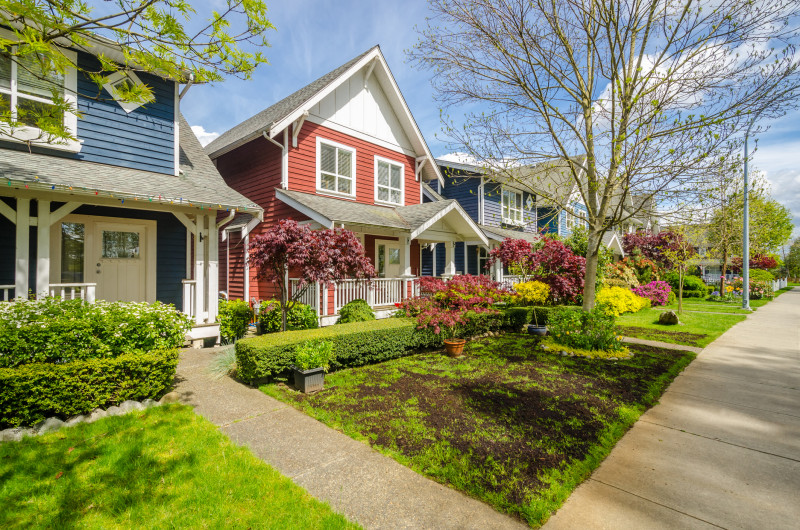Despite the pandemic, the U.S. housing market continues to outpace last year’s performances in new home sales, existing home sales, and housing starts.
Resilient. It’s the word that keeps coming up in industry conversations with contractors, lenders, and even portfolio managers at Wall Street titans. In the face of an economy-crushing pandemic, the U.S. housing market has been extraordinarily resilient.
In July, new home sales jumped an astonishing 36% compared to one year ago. Existing home sales jumped more than 9%. And housing starts vaulted an incredible 22%. It’s been quite the trifecta for real estate. We now find ourselves in a housing market that is not only steadfast in the face of this health crisis, but is in fact exploding in many markets.
The lenders who fared best during the summer were those with their own form of resiliency—internal funds that enabled them to continue doing some level of volume as the capital markets froze. The industry generally saw repays freeze in May and June, but then saw a huge jump in homes being sold and loans being paid off in July. Lenders quickly put that capital back to work with eager borrowers, but it was challenging to grow without the support many lenders had counted on the past few years from Wall Street. In the meantime, the housing market was roaring back to life behind low rates on traditional mortgages.
New Homes
The sentiment around new home supply has perhaps been the largest turnaround since the spring. Large firms driving an increase in new construction are gaining confidence as demand for housing continues to outpace supply.
There doesn’t appear to be a change ahead in the tailwinds driving this demand surge: low interest rates and a desire by many buyers to move to areas that offer more space. Perhaps the biggest factor pushing new home supply has been a shrinking inventory of existing homes, which are flying off the market and pushing buyers to instead build.
Existing Homes
In fact, existing sales this summer reached a pace not seen since 2006. These sales make up almost 90% of all housing transactions, so a jump of almost 10% represents an enormous increase.
Things may have slowed dramatically in March and April with shelter-in-place orders, but as it became clear the pandemic was not going to go away anytime soon, people began to adjust. Looking forward, we see increasing evidence of buyers who are no longer commuting on a daily basis and are now ready to move farther away from cities. We see a growing trend of people looking to live closer to family. And, of course, as with new home sales, we’re seeing a surge in families looking for homes that offer more space both inside and outside the home. So, the great rush to the suburbs is happening with full force.
Housing Starts
With a longer-term outlook in mind, housing starts are finally on a strong trajectory. Rising lumber costs have builders grumbling, but they can read the market and are running to capture the market’s overwhelming demand for new homes.
Some have worried that we’ll have an overabundance of supply, as these are a clear indicator of future housing inventory, but it’s unlikely. Between 1980 and 2006, the
country averaged 4.4 single-family housing starts per 1,000 people. Today, that number is down to only 2.7 per 1,000 people, so we have plenty of growth available in today’s incredibly hot market before we run into demand issues.
New construction, however, remains a challenge for many private lenders who rely on capital partners with Wall Street funding. While the builder market is heating up, the large institutions that ultimately purchase many of the industry’s loans have been shy to accept ground-up construction loans so far. The private lending industry was built on an ability to execute on atypical loans. In this case, the industry is facing headwinds, and many builders have been forced to go through bank channels instead.
First-Time Buyers
Behind this trifecta of growth we have a group that many assumed would rent forever but is now driving home-ownership demand: millennials. First-time buyers made up just over a third of sales this summer, and they are having trouble finding enough homes to buy.
“Although mortgage rates have ticked up recently, mortgage rates for purchases are likely to remain low for the foreseeable future as the Fed has pledged to maintain its stimulus commitment,” said Jason van den Brand, chief lending officer of Reali Loans. “While refinance activity has remained strong, the only thing holding back even more purchase activity is a shortage of entry-level homes for sale.”
Van den Brand’s comments are an enormous call to action for the private lending industry. Although large commercial homebuilders rely on bank financing, the private lending industry has served as the fuel behind America’s housing rehab economy. Banks are always slow to adapt coming out of economic shocks, so borrowers are increasingly looking to private lenders to fund their projects.
With families moving from the cities to the suburbs for more space, lenders are seeing a decrease of days-on-market in many markets. The resulting price stability (and growth) has led to a rebound in leverage that lenders are willing to take, not quite to pre-COVID levels, but significantly higher than what was being offered in April and May’s conservative markets.
Potential Challenges
The biggest potential challenge in the fourth quarter might be uncertainty around the election. History says home purchases typically drop at about twice the normal rate in the November of election years. The industry is hurt by a desire to defer major financial decisions until there is certainty in who will win the election. The impact is temporary and more about pushing out sales of homes to the following year than truly increasing or decreasing demand.
One particular area of uncertainty in the private lending industry is around the long-term rental product, which many lenders rolled out in the last few years. Such loans enabled borrowers to purchase and rehab a home, but instead of selling, they had the ability to roll their loan over into longer term financing and place a borrower in the home. The pandemic and the ensuing moratoriums on evictions quickly shut down the asset class in the spring. Since then, even the largest capital providers in the space have been inconsistent in renewing their appetite for funding these loans. With moratoriums continuing, a once-hot product remains on shaky ground.
Ultimately, the outlook on the housing market is a sharp turnaround from the spring. If mortgage rates remain as low as they are, unemployment continues to decrease, and the economy continues to recover, the housing market should remain vigorous through whatever happens in November.












Leave A Comment